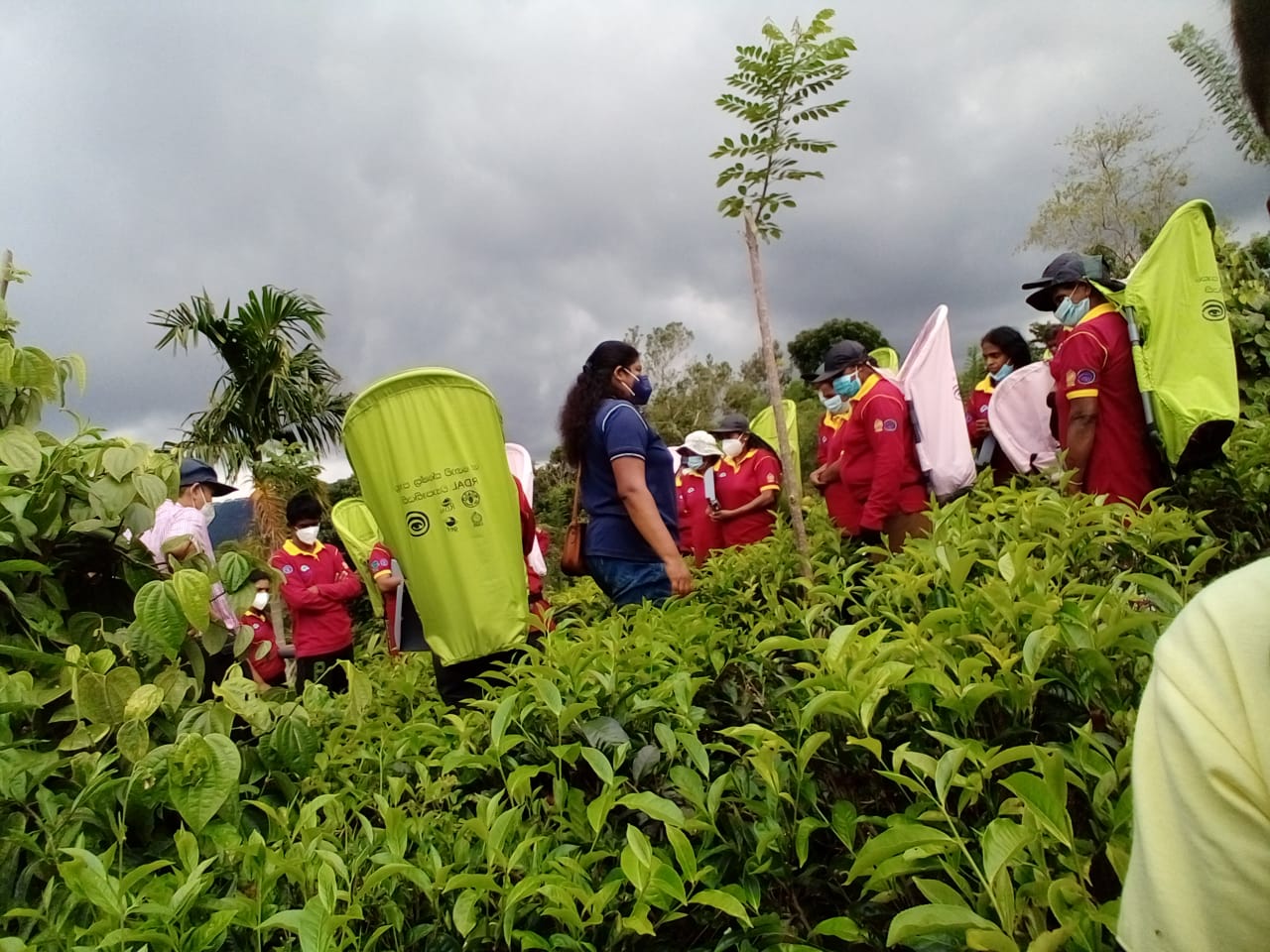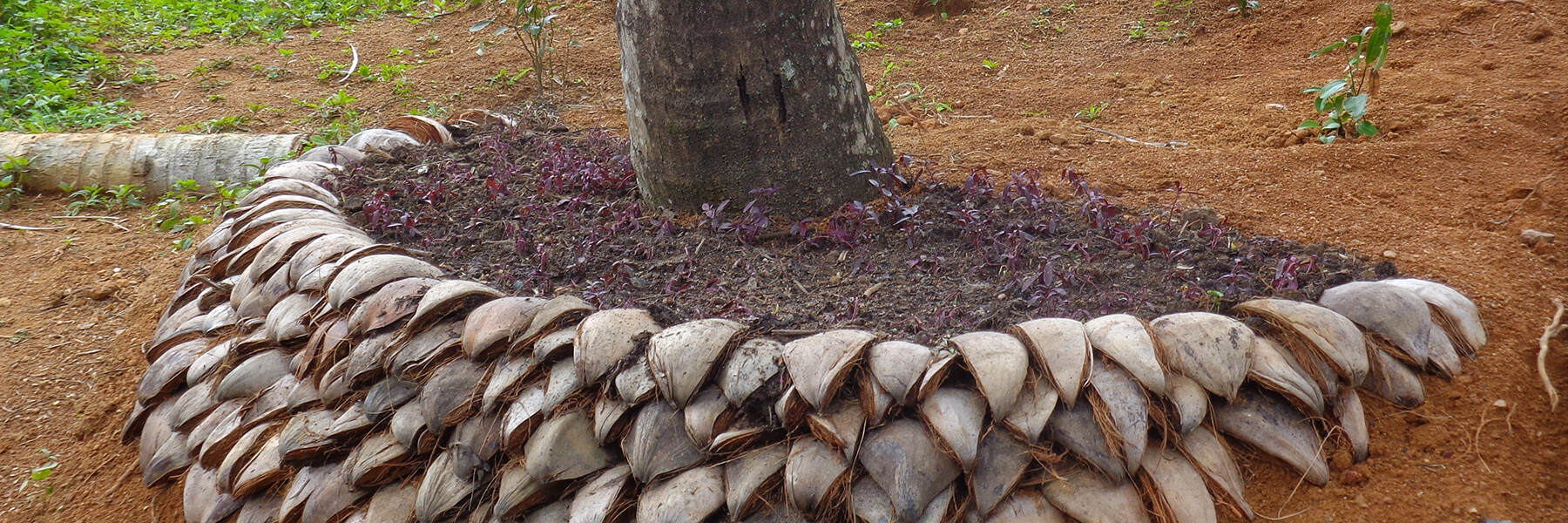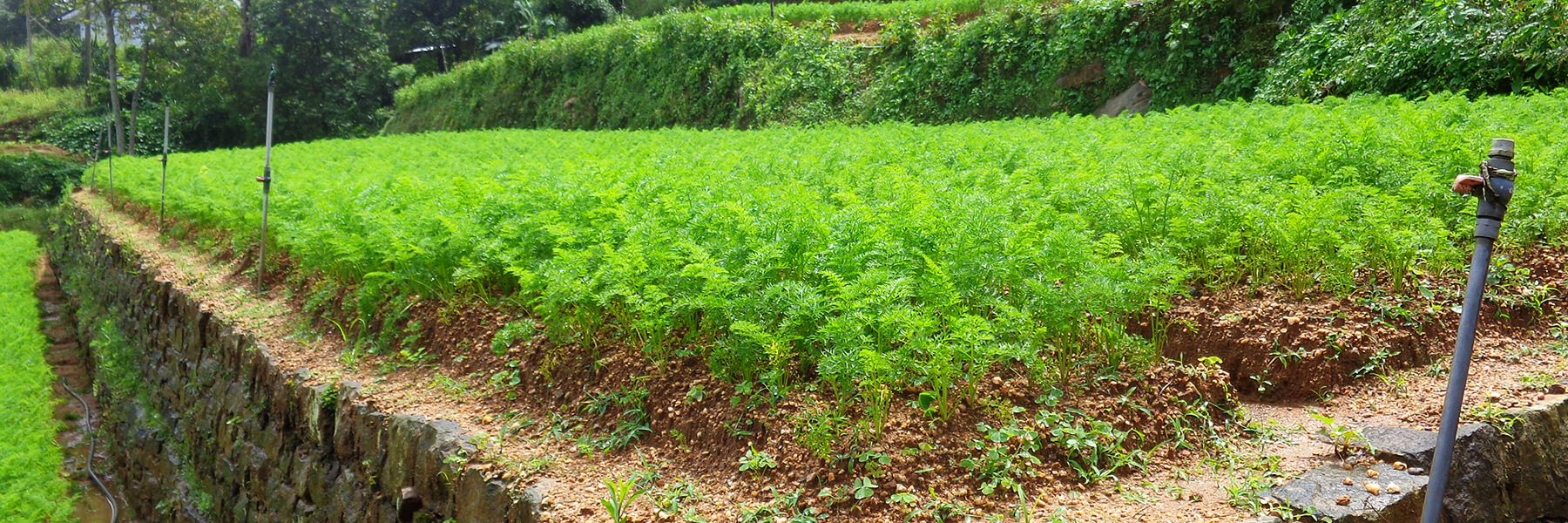Participatory land restoration with the collective efforts of different stakeholders can assure sustainable use of land-resources. This approach promoted sustainable land management technologies such as agroforestry, soil conservation, and soil fertility enhancement practices through inter-sectoral collaboration, including the use of digital tools and Farmer Field Schools (FFS) to provide training and resources, disseminate knowledge, improve market-orientation of farmers, and monitor and evaluate the progress of activities for rehabilitating and increasing the productivity of degraded tea smallholdings in the Central Highlands of Sri Lanka.
Due to unsustainable land management practices the monthly average green-leaf yield of tea smallholdings in Maligamale watershed in the Central Highlands of Sri Lanka is as low as 1000 kg/hectare, whereas the potential is 2400 kg/hectare. Soil erosion, soil fertility decline, low plant density, and poor shade management are among the main reasons for low productivity. This causes reduced household incomes and farmers’ ability to invest in sustainable land management (SLM) practices. Inefficiencies in top-down extension methodology, lack of awareness and training on tea cultivation techniques, poor business practices, lack of access to services and poor perceptions about SLM have reduced profit margins of tea smallholdings. Hence, the aim/ objectives of the approach are to increase the land productivity in tea smallholdings and increase farmer’s incomes and gain environmental benefits through proper implementation of SLM practices. To address this, the Rehabilitation of Degraded Agricultural Land Project (RDALP) introduced a participatory approach together with Tea Smallholdings Development Authority (TSHDA), Department of Agrarian Development and other relevant government institutions, the private sector and farming community. The approach considered methods for strengthening linkages between stakeholder groups, providing training and resources for SLM practices, enhancing market orientation, using ICT for knowledge sharing, monitoring and evaluation, improving perceptions of farming community on agriculture and enhancing food-security of the households.
Firstly, tea smallholders who volunteered to learn about SLM were linked with the experts to collectively develop a participatory land restoration proposal.
Site specific limitations for productivity improvement, recommendations, roles of different stakeholders, and training and material needs were identified in the proposal. The existing institutional setup was used for coordination of activities. The experts from government institutes provided training on SLM through farmer field schools, field demonstrations and ICT tools.
More specifically, farmers were educated on soil conservation and soil fertility management practices: these included producing organic fertilizers using locally available resources, building live fences with green-manure crops and edible crops, intercropping using export agriculture crops, in-filling, selective weeding, developing and maintaining nurseries, using machinery for cutting pits and harvesting, using safety measures during field operations, and shade tree management. In addition, farmers have been encouraged to share good-practices, keep records and practice soil test-based decision making for nutrient management.
Farmers and officers effectively used WhatsApp®, Zoom® and Facebook® for knowledge sharing and for monitoring and evaluating progress. Dissemination of knowledge using ICT and performance-based rewarding helped to recruit more farmers as followers. The TSHDA supported with extension service and regular monitoring of progress. With the support of government institutes, farmers were linked with private sector companies to promote market orientation. Export agriculture crops such as peppers, vanilla, areca nut and cloves were successfully incorporated into tea smallholding landscape, allowing farmers to earn an extra income. The partners from the private sector provided planting materials and extension services to transfer necessary knowledge and skills to the farmers. Machinery was provided to farmer organizations for the members to share.
Improving profitability of farming, improving hygiene and safety of farmers, and reducing time spent on agronomic practices have uplifted the living-status of famers and increased their willingness to invest in SLM. These characters could attract youth to the sector.

Resource persons involved in the approach:
SLM specialist – Mr. Nimal Gunasena
Key resource person – Mrs. Iroshini Senevirathna, Agrarian Research and Production Assistant, Department of Agrarian Development
Land user – Mrs. Pushpa Ranjani




